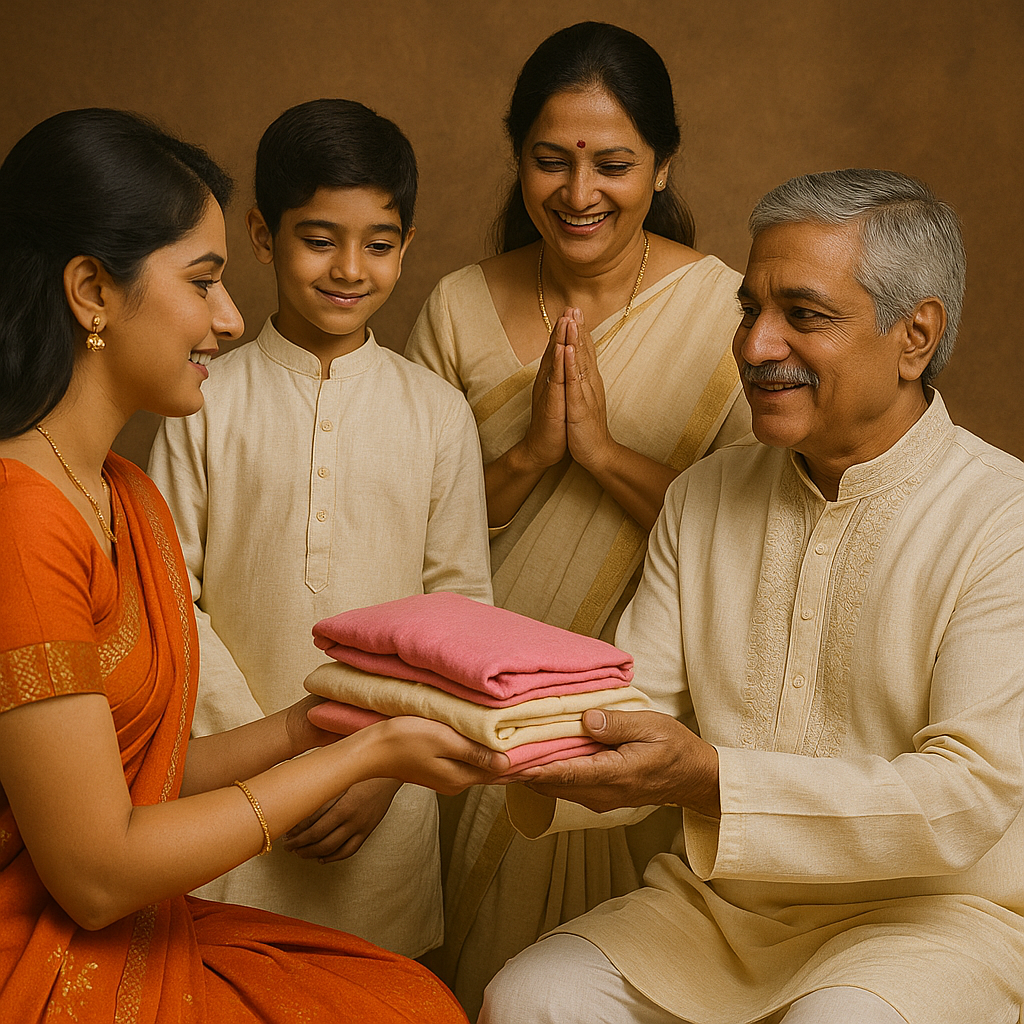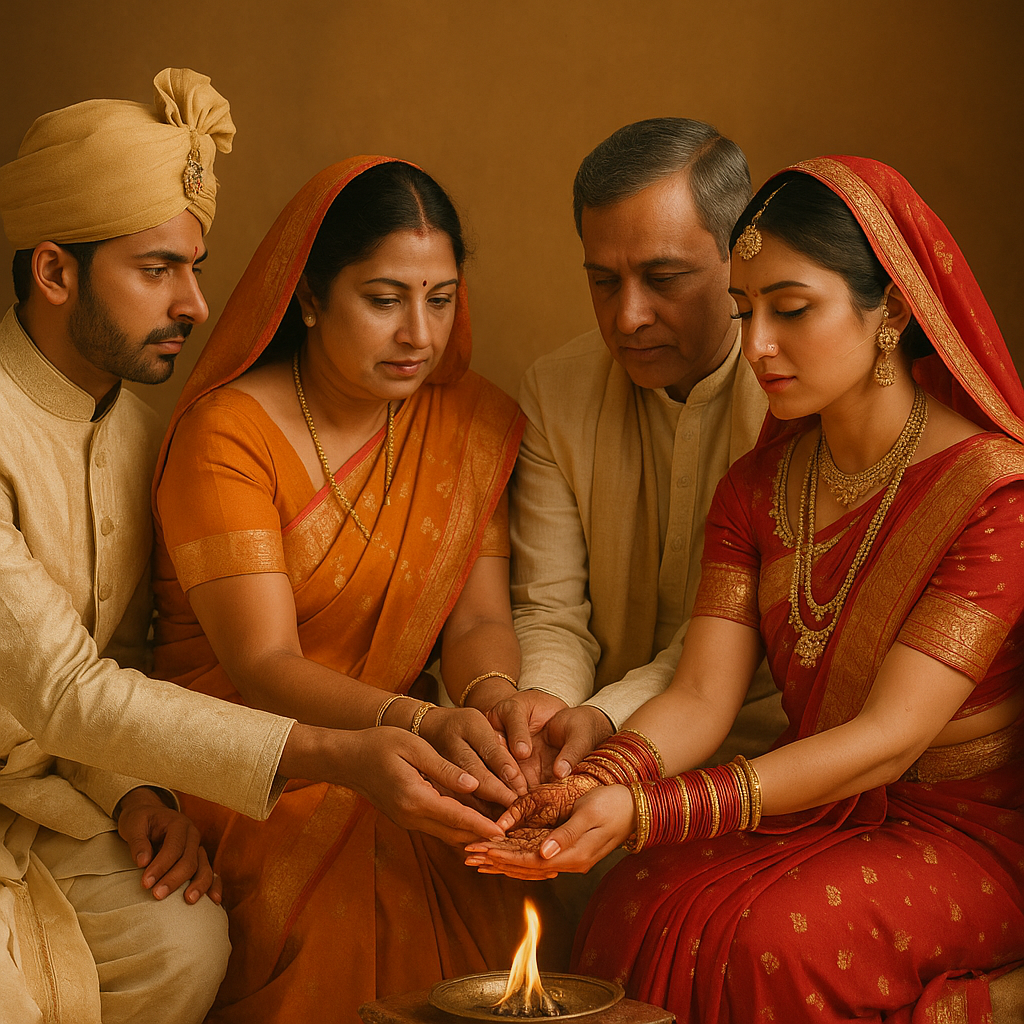When you visit a Hindu temple, one of the first things you do is remove your footwear. You leave your shoes outside, step onto the cool temple floor, and walk barefoot towards the deity.
This practice is so deeply woven into Hindu culture that it feels natural. But have you ever wondered why it is important?
Going barefoot in temples is much more than a tradition. It is a conscious act rooted in spiritual wisdom, ancient scriptures, health benefits, and a deep understanding of purity.
In Hinduism, temples are not just buildings. They are centres of divine energy, designed to uplift your body, mind, and soul. Every custom you follow inside the temple has a purpose, including the simple yet powerful act of walking barefoot.
In this article, you will learn the true reasons behind this sacred practice. We will explore its spiritual meaning, scriptural basis, scientific logic, and how similar customs exist in other religions.
Let us begin by understanding the spiritual significance of going barefoot in temples.
Spiritual Significance of Going Barefoot in Temples
In Hinduism, approaching the divine requires a pure body, pure mind, and pure heart.
Walking barefoot in a temple is an important part of this preparation.
When you remove your footwear before entering a temple, you show humility and respect to the sacred ground. You recognize that the temple is not just a physical structure, but a living space charged with divine energy.
Walking barefoot creates a direct connection between your body and the spiritual vibrations flowing through the temple floor. Your feet, rich with nerve endings, absorb this positive energy, allowing it to nourish your entire being. It is believed that the Earth element (Prithvi Tattva) enters the body more easily when you are barefoot, grounding you spiritually.
Footwear acts as a barrier between you and these subtle energies. Shoes also carry dust, dirt, and impurities from the external world. In Hindu tradition, leather footwear, in particular, is considered impure because it comes from dead animals. Bringing it into a holy space is seen as disrespectful and polluting.
Leaving footwear outside symbolizes:
- Leaving behind ego
- Material attachments and worldly concerns.
You approach the deity in your simplest form, free from the weight of status and pride, ready to receive blessings with a pure heart.
Many temples, especially ancient ones, consecrate their floors with sacred substances like turmeric, sandalwood, and vermilion. Walking barefoot on such sanctified ground becomes not just an act of respect but also a subtle form of receiving divine blessings through direct touch.
The
Manusmriti
emphasizes that a devotee must maintain utmost cleanliness and reverence before approaching the divine.
Removing footwear is a simple yet profound step toward fulfilling this sacred duty.
Ancient Beliefs and Scriptural References
The tradition of removing footwear before entering sacred spaces is deeply rooted in Hinduism. It is not a modern practice, but one that has been emphasized in ancient scriptures and carried forward through generations.
The Manusmriti , a key Dharma Shastra, highlights the importance of personal purity in all acts of reverence. In Manusmriti (Chapter 4, Verse 45), it is advised that individuals should not engage in activities like eating, worshipping, or performing bodily functions while wearing shoes. This reflects the larger principle that footwear carries impurities and must be removed when undertaking sacred or pure actions.
Although the text does not directly mention temple entry, the message is clear: cleanliness, humility, and conscious removal of external impurities are essential when approaching anything sacred.
In ancient times, even wooden footwear, called padukas, was left outside temple premises. Devotees walked barefoot on the temple grounds, believing that the very soil and stones carried divine vibrations.
Many temple complexes were built at spiritually powerful locations like riverbanks, mountains, and energy centres described in Vedic geography. Walking barefoot allowed devotees to connect directly with these energies, enhancing their spiritual experience.
Hindu philosophy teaches that external actions mirror internal attitudes. Removing footwear is a physical act that prepares your mind for surrender, devotion, and receptivity before the divine.
Insights from Other Ancient Texts
Beyond the Manusmriti, other ancient scriptures also highlight this practice.
The Angirasa Smriti, one of the important Dharma Shastras, explicitly mentions that footwear should be removed in places of worship, including temples and sacred homes, to maintain their sanctity. The text stresses that purity of the environment is vital for any spiritual activity to bear fruit.
Such scriptural insights collectively emphasize that removing footwear is not merely a social custom but a sacred gesture of respect, humility, and purity that has been followed since ancient times.
Scientific and Health-Based Reasons
The custom of walking barefoot in temples is not only spiritual but also deeply beneficial for your health and wellbeing. Ancient practices and modern science both recognize several advantages:
Activation of the Root Chakra
According to yogic wisdom, the Muladhara or Root Chakra governs stability, grounding, and security. Walking barefoot stimulates this chakra, helping you feel more centered and connected to the Earth.
Direct Absorption of Positive Energy
Many temples are built at locations rich in natural energy. Their floors are often treated with sacred substances like turmeric, sandalwood, and sindoor, which have energetic and antiseptic properties. Walking barefoot allows your body to directly absorb these positive energies.
Stimulation of Vital Pressure Points
The soles of your feet contain numerous nerve endings linked to different organs. When you walk barefoot, these points are naturally stimulated, enhancing blood circulation, boosting immunity, and promoting internal balance.
Improved Posture and Natural Movement
Walking without footwear strengthens the muscles of the feet and legs. It improves posture, balance, and flexibility, reducing the risk of joint and back problems over time.
Stress Relief and Mental Calmness
Direct contact with the Earth, a practice sometimes called “earthing,” helps discharge built-up stress from the body. Studies show it can lower cortisol levels, calm the nervous system, and promote better sleep.
Natural Cooling Effect
Temple floors, often made of stone, maintain a cooling temperature even in hot climates. Walking barefoot on these surfaces helps regulate body heat and brings a natural sense of calmness to the mind and body.
Why Shoes Are Considered Impure in Holy Spaces
In Hinduism, removing footwear before entering a temple is a profound act of respect and purity. This practice is rooted in both spiritual beliefs and practical considerations.
Symbol of Humility
Approaching the divine requires humility. Removing shoes signifies leaving behind ego and worldly attachments, allowing you to present yourself in the simplest form before the deity.
Physical Impurities
Shoes carry dust, dirt, and impurities from the outside world. Bringing them into a sacred space is seen as introducing external pollutants, disrupting the sanctity and energetic purity of the environment.
Material Considerations
Traditional footwear, especially those made from leather, is considered impure because leather comes from animal hide. Wearing such materials inside temples is avoided to maintain spiritual cleanliness.
Scriptural Foundations
Ancient Hindu texts emphasize the importance of cleanliness and purity in acts of worship. The Manusmriti advises against performing sacred or pure activities while wearing shoes, underlining the larger principle of sanctity when entering holy spaces.
Connection with Sacred Architecture
Temple architecture often uses stone, marble, and other natural materials known to retain spiritual vibrations. Walking barefoot allows you to absorb these energies directly, enhancing your spiritual connection.
Similar Barefoot Customs in Other Religions and Cultures
The act of removing footwear before entering a sacred space is not unique to Hinduism. Across the world, many religions and spiritual traditions observe similar customs to honor the divine presence.
Islam
Muslims remove their shoes before entering mosques. This practice maintains cleanliness and expresses deep respect for the sacred space where prayers are offered directly to Allah.
Christianity
In certain Christian traditions, especially among monks and nuns, going barefoot or wearing simple footwear is a symbol of humility and penance. In some churches, believers remove their shoes during special ceremonies to show reverence.
Buddhism
In Buddhist temples, devotees always remove their footwear before entering. This act reflects mindfulness, respect, and the understanding that the temple is a space dedicated to the pursuit of enlightenment.
Judaism
In ancient Jewish traditions, removing shoes was a sign of deep respect during holy encounters. For example, when Moses approached the burning bush, he was instructed by God to remove his sandals because he was standing on holy ground.
Sikhism
In Sikhism, it is customary to remove footwear before entering a Gurdwara (Sikh temple). The act signifies maintaining the purity and sanctity of the space where the Guru Granth Sahib, the holy scripture, is kept.
Greek Orthodox Christianity
During rituals like the Anastenaria, participants walk barefoot over burning coals as a sign of deep faith, purification, and spiritual endurance.
Nature-Based and Indigenous Traditions
In many earth-centred spiritual paths, practitioners go barefoot during rituals to establish a strong, direct connection with the Earth’s natural energies.
Experience Authentic Vedic Puja Services with Rudra Centre
The simple act of walking barefoot in a temple is part of a greater tradition of entering sacred spaces with purity and humility. A tradition that lives on through powerful Vedic rituals as well. If you wish to deepen your connection with divine energies beyond temple visits, consider performing authentic pujas guided by expert priests through Rudra Centre.
Rudra Centre offers a wide range of traditional Vedic pujas, homams, and rituals performed according to ancient scriptures, supporting your spiritual journey with the same reverence and discipline symbolized by going barefoot.
Click on the link to explore Rudra Centre’s online puja services and book a ceremony for peace, prosperity, health, and spiritual upliftment.


-in-Astrology.jpg)






.jpg)



Comments 0
Leave your thought here